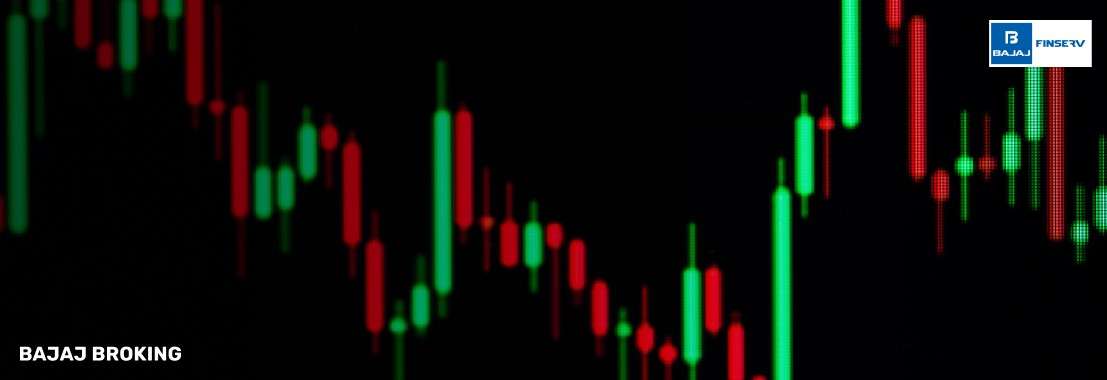Candlestick patterns are widely used in technical analysis to interpret price movements in the stock market. Among these, the Black Marubozu is a distinct and significant pattern that reflects strong bearish sentiment in the market. This article examines the fundamental aspects of the Black Marubozu candlestick, including its significance, structure, implications, and application in trading decisions.
What is Black Marubozu Candlestick Trading Pattern?
The Black Marubozu candlestick is a bearish candlestick with a long body and no visible wicks or shadows on either end. This means that the stock or asset opened at its highest price and closed at its lowest price during the trading session. The absence of upper and lower shadows indicates consistent selling pressure throughout the period.
This pattern typically forms during a downtrend or can mark the beginning of one. It reflects a situation where sellers dominated the market from open to close without allowing buyers to gain any meaningful control.
According to sources such as Moneycontrol and The Economic Times, this candlestick is considered a clear sign of bearish dominance and is commonly used to anticipate further price declines, especially when supported by other technical indicators.
What Does Black Marubozu Pattern Indicate?
The appearance of a Black Marubozu candlestick on a chart generally indicates strong negative market sentiment. It sends a message that sellers had full control of the price movement during the session.
Some of the key interpretations include:
Confirmation of a downtrend: If the pattern appears after a series of declining candles, it confirms continued bearishness.
Reversal signal: In some cases, if it forms at the end of an uptrend, it might signal a reversal, especially if confirmed by high trading volume.
Market confidence in selling: It reflects firm conviction from the sellers, with little to no resistance from buyers.
However, a single candlestick should not be used in isolation. It is often assessed in conjunction with volume trends, support and resistance levels, and broader market conditions to provide a more accurate analysis.
Different Forms of the Black Marubozu Trading Pattern
Although the traditional Black Marubozu has no shadows, variations can occur depending on market dynamics. These variations include:
Type
| Description
|
Full Black Marubozu
| Opens at high and closes at low with no upper or lower shadow. Indicates the strongest bearish sentiment.
|
Opening Black Marubozu
| No upper shadow, but a small lower shadow exists. Suggests strong selling pressure, with minor resistance near the end.
|
Closing Black Marubozu
| Has a small upper shadow but closes at the lowest price. Reflects slight buyer resistance at the start, but sellers dominated eventually.
|
Understanding these forms enables traders and analysts to interpret the signal's strength more accurately. The shorter the shadows, the more decisive the market sentiment.
Advantages and Disadvantages of Black Marubozu Trading Pattern
Like all candlestick patterns, the Black Marubozu has its own set of strengths and limitations. Below is a balanced view:
Advantages
Clear bearish indication: It visually demonstrates a strong downward move, making interpretation straightforward.
Useful in trend confirmation: When aligned with other patterns, it confirms the continuation of a bearish trend.
Works across timeframes: Can be applied to daily, weekly, or intraday charts.
Disadvantages
Lack of context: Without analysing broader trends or indicators, it may give misleading signals.
False signals in sideways markets: In low-volume or range-bound markets, its significance reduces.
No information on future momentum: It shows past sentiment but not the strength of future moves.
Thus, while the pattern is helpful in identifying sentiment, it should be complemented with other tools such as moving averages, RSI, and volume analysis for improved accuracy.
How to Trade Using Black Marubozu Trading Pattern?
While the Black Marubozu is not a standalone trading signal, it can play a useful role in forming a strategy when combined with technical tools.
Steps to consider:
Confirm the trend: Ensure the pattern appears in the direction of a larger trend (e.g., during a downtrend).
Check volume: Higher-than-average volume adds credibility to the pattern.
Set entry points: Traders often wait for the next candle to confirm the direction before entering a position.
Define stop-loss levels: Use recent resistance levels or the top of the Black Marubozu candle to set a stop-loss.
Combine with indicators: RSI or MACD can provide additional confirmation about momentum and trend strength.
Example:
Suppose a Black Marubozu appears after a breakdown below a key support level on the Nifty 50 index. If accompanied by high trading volume, this may indicate further downside. A trader may consider entering a short position with a stop-loss just above the candle’s high.
As per NSE India and SEBI guidelines, technical analysis should always be approached cautiously and with risk management in place.
Understanding the Accuracy of the Black Marubozu Candlestick Pattern
The effectiveness of the Black Marubozu pattern depends largely on the market context in which it appears. Its accuracy improves when:
It forms during high-volume sessions.
It appears after a period of price consolidation.
It is part of a larger pattern, like the Bearish Engulfing or Evening Star.
However, the pattern is not foolproof. A study by Financial Express indicates that single candlestick patterns have limited predictive power when used alone. Their success rate improves significantly when paired with other tools like Fibonacci levels, Bollinger Bands, or chart patterns.
Furthermore, algorithmic trading and high-frequency trades often cause price fluctuations that might form misleading patterns. This reinforces the need for confirmation and context in technical analysis.
Conclusion
The Black Marubozu candlestick pattern is a widely recognised signal of bearish sentiment in the stock market. Its distinctive structure, long black body with no shadows, indicates continuous selling pressure throughout a trading session. Although it is a powerful visual cue, it must be used as part of a broader technical analysis framework to avoid misinterpretation.
By understanding its implications, variations, and limitations, market participants can incorporate it into their technical toolkit more effectively. Nevertheless, all trading decisions should be based on careful analysis and aligned with one’s individual risk tolerance and financial knowledge.














